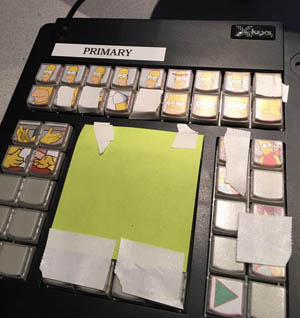Homer Keys

“Your hardware worked flawlessly.” - David Simons, Senior Principal Scientist at Adobe Systems

Behind the scenes during the live performance in the recent Simpsons episode, David Silverman tapped X-keys programmed buttons triggering Homer’s movements. The X-keys triggered pre-animated poses as Dan Castelleneta adlibbed answers to caller questions.
Adobe Character Animator, a new feature in Adobe After Effects CC, used Castelleneta’s voice to animate Homer’s mouth while the X-keys controlled Homer’s head, arms, and hand gestures. David Silverman refers to this process as “animation puppetry.” Characters drawn in Photoshop or Illustrator are imported to Character Animator. The lip-sync animation is driven by the spoken audio. Although not used on The Simpsons, a webcam can be used to capture the voice actor’s head movements and facial expressions and transfer them to the animated character."We created a live interface so animators could get immediate feedback on their performances, but as more people asked about live broadcasts, we knew we had something special," said David Simons, co-creator of Adobe After Effects. "I’ve been a fan of The Simpsons since the early 90s, so, when they contacted us, we jumped at the opportunity to work with them on their first live broadcast."
Learn more about how The Simpsons TV Show and Adobe make live animation television history.
